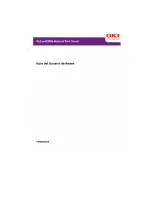
Packet Handling
Hewlett-Packard Company Virtual Private Networking Concepts Guide
3-7
Packet Handling
Packet Handling
Packet Handling
Packet Handling
When a computer or network device communicates over a
network (either a LAN or a WAN such as the Internet), the
devices all perform similar functions. The application program
(for example, a mail program) formulates a message, which is
then passed to a set of functions collectively known as the TCP/
IP stack. The TCP/IP stack looks at the message to determine if
it needs to be sent out of the computer and then breaks the
message into small packets and adds some header information
to each packet.
The header information includes the following information:
•
The destination address of the packet (the IP address of the mail
server)
•
The application port on the destination computer (for
example, port 25 indicates that a SMTP mail server should be
the application listening at the destination address)
•
The source address of the sender (the IP address of the
computer where the e-mail client is running)
•
The application port that the sending machine used (usually
randomly assigned)
•
The protocol used (for SMTP mail, the protocol is TCP)
The maximum size of these packets including the header is
usually 1500 bytes. Therefore, if your e-mail message is longer
than 1500 bytes (1500 characters), it will be broken into several
packets before being sent to the network layer and finally being
transmitted onto the network. A simplified packet as released by
the TCP/IP stack is shown next.
Figure: Simplified Packet
Figure: Simplified Packet
Figure: Simplified Packet
Figure: Simplified Packet
Related
Related
Related
Related
Information
Information
Information
Information
Packet Keys (page 3-8)
Encapsulation Overview (page 3-1)
Dest
IP
Src
IP
Dest
Port
Src
Port
Prot
Payload Data
















































